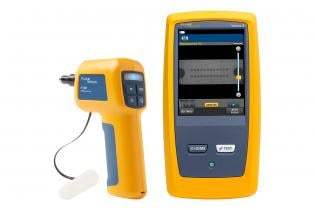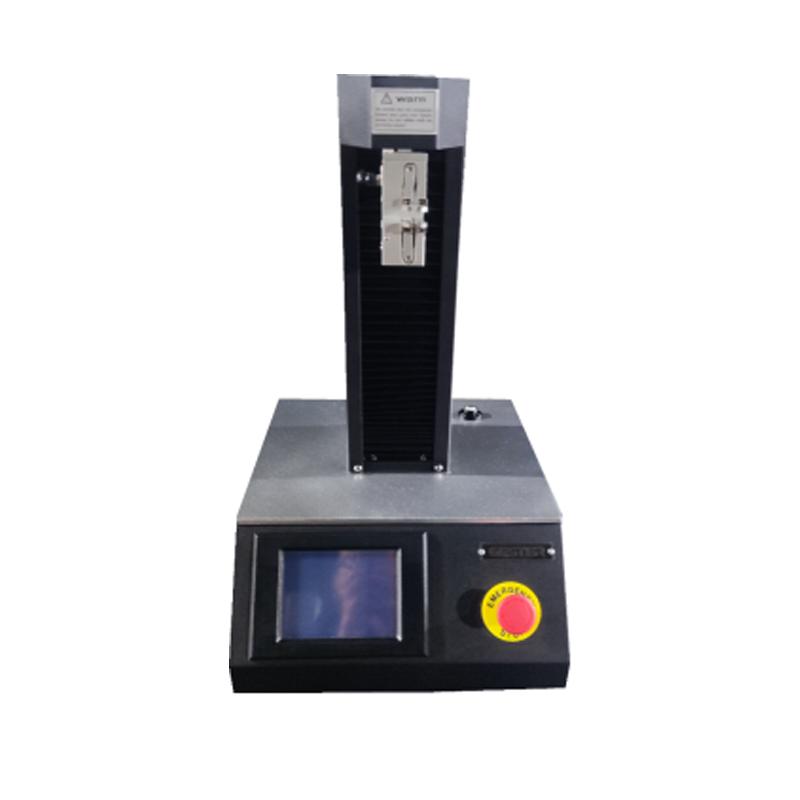Comprehending How an Optical Measurement System Enhances Precision in Industrial Applications
Optical measurement systems play a vital duty in boosting accuracy throughout numerous industrial applications. By leveraging sophisticated technologies such as laser interferometry and 3D imaging sensors, these systems use high-resolution, non-contact dimensions. This capacity reduces the threat of damaging sensitive components while making sure accuracy. Nonetheless, the effect of these systems prolongs beyond simple measurements. Discovering their benefits, applications, and future trends discloses an intricate landscape of technology and difficulties that merits closer examination.
The Basics of Optical Measurement Systems
Optical measurement systems act as necessary tools in numerous industrial applications, offering accurate information collection and evaluation. These systems utilize light as a key ways of measurement, leveraging optical principles to examine measurements, placements, and surface qualities of things. They integrate elements such as lasers, electronic cameras, and sensing units, which collaborate to capture high-resolution pictures and data.
The technology makes it possible for non-contact dimensions, lessening the threat of damaging sensitive parts. Optical measurement systems are versatile, discovering energy in quality assurance, setting up verification, and dimensional evaluation across various sectors. They are particularly effective in environments where traditional measurement techniques might drop short, such as gauging complex geometries or observing quick movements.
As markets remain to evolve, the combination of optical measurement systems will certainly remain crucial for guaranteeing precision and effectiveness, eventually improving item quality and functional productivity in various manufacturing procedures.
Secret Technologies Behind Optical Measurement
Secret modern technologies such as laser interferometry techniques and 3D imaging sensing units play an essential function in the performance of optical measurement systems (robotic vision). These technologies make it possible for specific dimensions and in-depth evaluation in different commercial applications. Recognizing their capabilities is essential for using the complete potential of optical measurement systems
Laser Interferometry Techniques
Various laser interferometry strategies have reinvented the field of optical measurement, supplying unmatched precision and precision in numerous commercial applications. These strategies use the interference of systematic light waves to determine distance, variation, and surface area irregularities with nanometer-level precision. Typical techniques consist of Michelson interferometry, which splits a beam of light and assesses stage changes, and Fabry-Pérot interferometry, recognized for its high resolution in determining little adjustments. In addition, laser Doppler interferometry employs regularity shifts to examine velocity, making it important in vibrant measurements. The adaptability of these techniques enables their combination right into diverse manufacturing procedures, boosting quality assurance and guaranteeing adherence to strict resistances. As an outcome, laser interferometry proceeds to play an essential function beforehand commercial measurement requirements.
3D Imaging Sensors
Improvements in measurement innovation have resulted in the growth of 3D imaging sensing units, which play a considerable function in optical measurement systems. These sensors capture three-dimensional information through different strategies such as triangulation, time-of-flight, and structured light. By properly rebuilding the shape and dimensions of things, 3D imaging sensing units improve the accuracy of measurements in commercial applications. They provide real-time comments, helping with high quality control and making sure that components satisfy rigid specifications. Furthermore, their capability to operate in tough atmospheres, such as differing lights problems, makes them important in producing processes. As sectors significantly embrace automation, the assimilation of 3D imaging sensing units into optical measurement systems is anticipated to drive more renovations in efficiency and precision.
Benefits of Optical Measurement in Sector
Standard measurement approaches have long been the requirement in industrial settings, optical measurement systems use considerable advantages that boost accuracy and efficiency. These systems make use of light to catch information, causing high-resolution dimensions that are typically unattainable with traditional techniques. The non-contact nature of optical measurements lowers the threat of damaging sensitive components throughout the analysis procedure. In addition, the rate of optical dimensions enables for quick information procurement, facilitating timely decision-making in fast-paced commercial atmospheres.
Optical systems are adaptable, capable of determining different materials and shapes without the demand for considerable recalibration. This convenience adds to boosted operations and productivity. Additionally, the automation potential of optical measurement systems lessens human error, ensuring constant quality assurance. Overall, the integration of optical measurement innovation represents a progressive shift towards boosted accuracy and reliability in commercial operations, inevitably bring about enhanced product high quality and operational performance.
Applications of Optical Measurement Systems

Optical measurement systems play a critical function in boosting production procedure optimization by providing accurate data for decision-making. These systems guarantee high quality control assurance with real-time tracking and evaluation of manufacturing metrics. discover this info here As sectors progressively take on these innovations, their effect on effectiveness and item reliability ends up being obvious.
Manufacturing Refine Optimization
Enhancing manufacturing process performance is significantly dependent on the combination of optical measurement systems. These systems provide real-time data on different criteria, enabling manufacturers to examine procedures with a high level of accuracy. By enabling specific measurements of measurements, surface area characteristics, and material residential or commercial properties, optical measurement systems assist in the recognition of ineffectiveness and traffic jams in assembly line. The instant responses from these systems encourages engineers to make educated decisions, causing maximized machining, setting up, and finishing procedures. The capacity to monitor conditions continually allows for flexible changes, lessening downtime and waste. As markets go for greater performance and lowered functional prices, optical measurement systems become critical tools for enhancing production procedure optimization.

Quality Assurance Assurance
The integration of optical measurement systems significantly effects high quality control assurance in commercial settings. These systems give exact and non-destructive measurements, enabling suppliers to find flaws and discrepancies early in the production procedure. By utilizing innovative imaging strategies, such as laser triangulation and interferometry, optical measurement systems guarantee that elements satisfy strict specifications. This facilitates real-time tracking, reducing waste and reducing the threat of damaged items getting to the market. In addition, the data collected can be analyzed to refine production procedures even more, resulting in continuous improvement. Inevitably, the fostering of optical measurement systems improves dependability and consistency in quality control, fostering better confidence amongst stakeholders and consumers alike in the final products provided.
Instance Studies: Successful Applications
Numerous markets have actually efficiently incorporated optical measurement systems to enhance their operational efficiency and item top quality. In the auto field, a noticeable supplier embraced a laser triangulation system to keep track of the positioning of car parts. This execution greatly reduced setting up errors, resulting in improved safety and reduced prices.
In the aerospace sector, a leading aircraft supplier made use of optical width for precision measurements of wind turbine blades, achieving a decrease in making tolerances and better efficiency requirements.
A consumer electronic devices company applied optical measurement modern technology throughout the production of smartphone displays, resulting in enhanced top quality control and a reduction in defective products.
These study illustrate how optical measurement systems not only boost accuracy but likewise contribute to total operational efficiency, demonstrating their value across various industries. By dealing with specific needs, these systems have shown to be vital tools in modern commercial applications.
Challenges and Limitations of Optical Measurement
While optical measurement systems use considerable benefits in various industrial applications, they are not without their obstacles and restrictions. One significant concern is sensitivity to ecological problems, such as temperature changes, moisture, and dirt, which can detrimentally influence measurement accuracy. Furthermore, optical systems often require exact alignment and calibration, making them vulnerable to human error throughout arrangement and procedure. Another restriction is the possibility for disturbance from ambient light, which can distort measurements and require complicated filtering system strategies. Moreover, specific materials and surfaces might present difficulties, as reflective or transparent qualities can result in irregular readings. The expense of high-grade optical parts and systems can additionally be a barrier for some industries, limiting prevalent fostering. Specialized training is often needed for workers to efficiently run and keep these systems, including to the general intricacy and functional difficulties.
Future Trends in Optical Measurement Technology
As advancements in modern technology proceed to form commercial processes, the future of optical measurement systems is positioned for significant development. Arising trends suggest a shift in the direction of improved combination of synthetic knowledge and maker knowing, allowing systems to evaluate information in real-time, determine patterns, and improve decision-making procedures. Furthermore, the investigate this site development of miniaturized sensing units and progressed optics is expected to lead to more compact and flexible measurement solutions, making them accessible for a bigger series of applications.
In addition, the unification of 3D imaging and high-resolution capabilities will enable unmatched precision in dimensions, which is important for markets such as aerospace and auto. The push for automation and Market 4.0 will certainly additionally drive the need for optical measurement systems that can easily interface with other innovations. As these trends unfold, optical measurement systems will likely become integral to accomplishing greater effectiveness and accuracy throughout numerous industrial markets.

Regularly Asked Questions
Just How Do Optical Measurement Systems Compare to Conventional Measurement Methods?
Optical measurement systems supply greater precision and speed contrasted to typical techniques - fibre testing equipment. They reduce human mistake, improve data collection performance, and give real-time outcomes, making them progressively favored in different commercial applications for exact dimensions
What Industries Benefit the A Lot Of From Optical Measurement Systems?
Optical measurement systems substantially benefit sectors such as aerospace, vehicle, and electronic devices. Their ability to offer high-precision measurements improves quality assurance, decreases production errors, and enhances overall efficiency, making them vital in competitive manufacturing atmospheres.
Can Optical Measurement Systems Be Customized for Particular Applications?
Optical measurement systems can without a doubt be customized for specific applications. By changing criteria such as wavelength, resolution, and calibration methods, industries can customize these systems to satisfy unique accuracy and precision demands properly.
What Is the Upkeep Need for Optical Measurement Systems?
The upkeep check this needs for optical measurement systems generally consist of normal calibration, cleaning of optical components, and software application updates. Following these methods assurances precision, dependability, and durability of the measurement tools in numerous applications.
Just How Do Environmental Elements Affect Optical Measurement Accuracy?
Ecological factors, such as temperature level variations, moisture, and dirt, significantly impact optical measurement accuracy. These components can misshape light paths and hinder sensing unit analyses, inevitably compromising the dependability and precision of measurements in industrial setups.